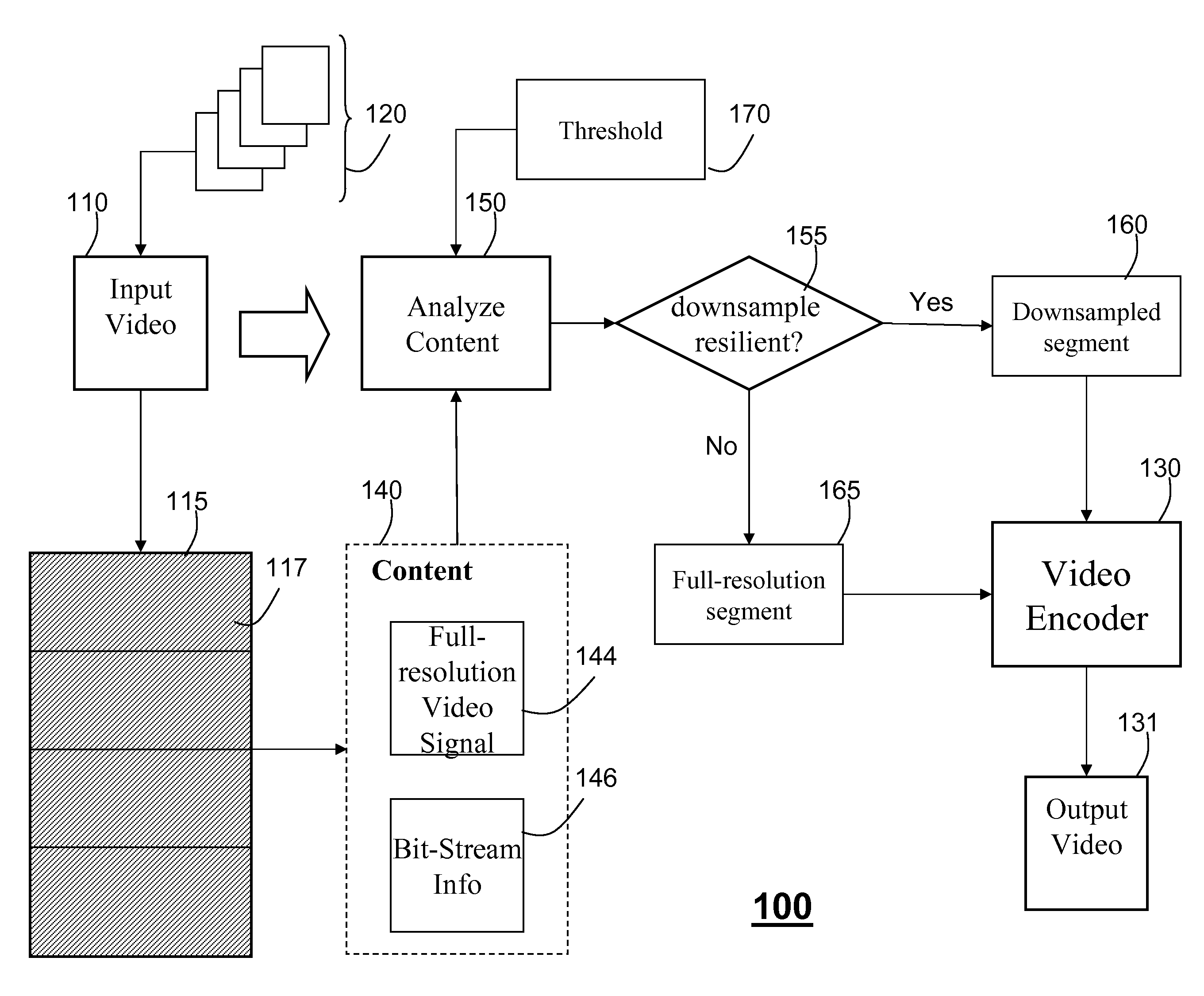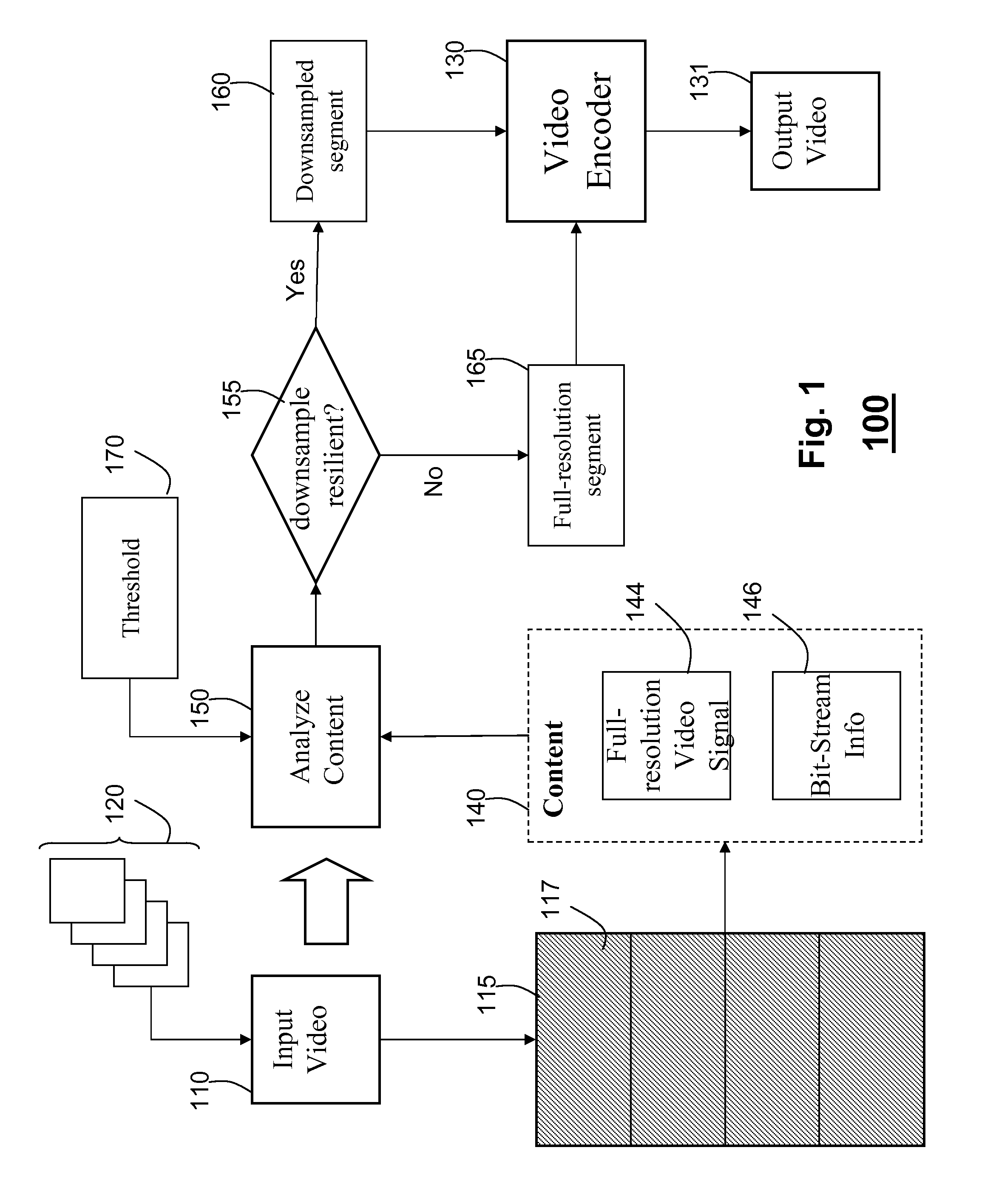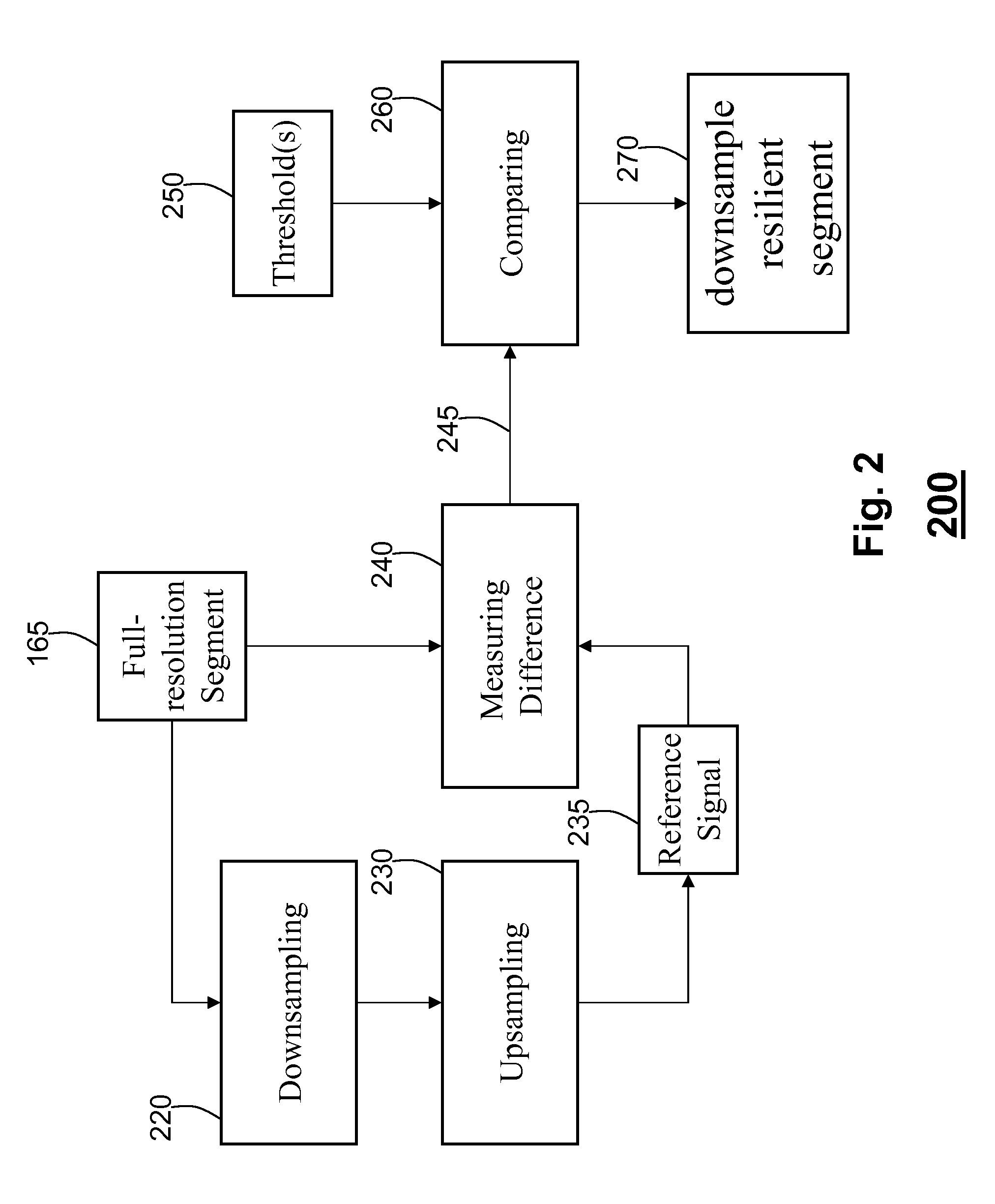Adaptive Video Transcoding
- Summary
- Abstract
- Description
- Claims
- Application Information
AI Technical Summary
Benefits of technology
Problems solved by technology
Method used
Image
Examples
examples
[0036]FIG. 4 shows a transcoder according to one embodiment of the invention. The input video bitstream 110 is processed by a video decoder 420 to produce a full-resolution video 425, and macroblock information including motion vectors 415, and coding modes 417.
[0037]An adaptive resolution selector 430 determines the pair of resolution scale factors (sx, sy) 435 for both horizontal and vertical directions according to outputs of the video decoder 420. The adaptive resolution selector 430 determines whether the system transcodes the full-resolution video 425 or a reduced resolution video 445, and what the scale factors are in each dimension for downsampling 440. For instance, resolution scale factors of (1, 1) implies full-resolution transcoding, while resolution scale factors of (2, 1) implies horizontal down-sampling by a factor of two and no down-sampling in the vertical direction. The scale factors can have other values, e.g., 3, 4, 3.5. The resolution of the video 445 can change...
PUM
 Login to View More
Login to View More Abstract
Description
Claims
Application Information
 Login to View More
Login to View More - R&D
- Intellectual Property
- Life Sciences
- Materials
- Tech Scout
- Unparalleled Data Quality
- Higher Quality Content
- 60% Fewer Hallucinations
Browse by: Latest US Patents, China's latest patents, Technical Efficacy Thesaurus, Application Domain, Technology Topic, Popular Technical Reports.
© 2025 PatSnap. All rights reserved.Legal|Privacy policy|Modern Slavery Act Transparency Statement|Sitemap|About US| Contact US: help@patsnap.com



